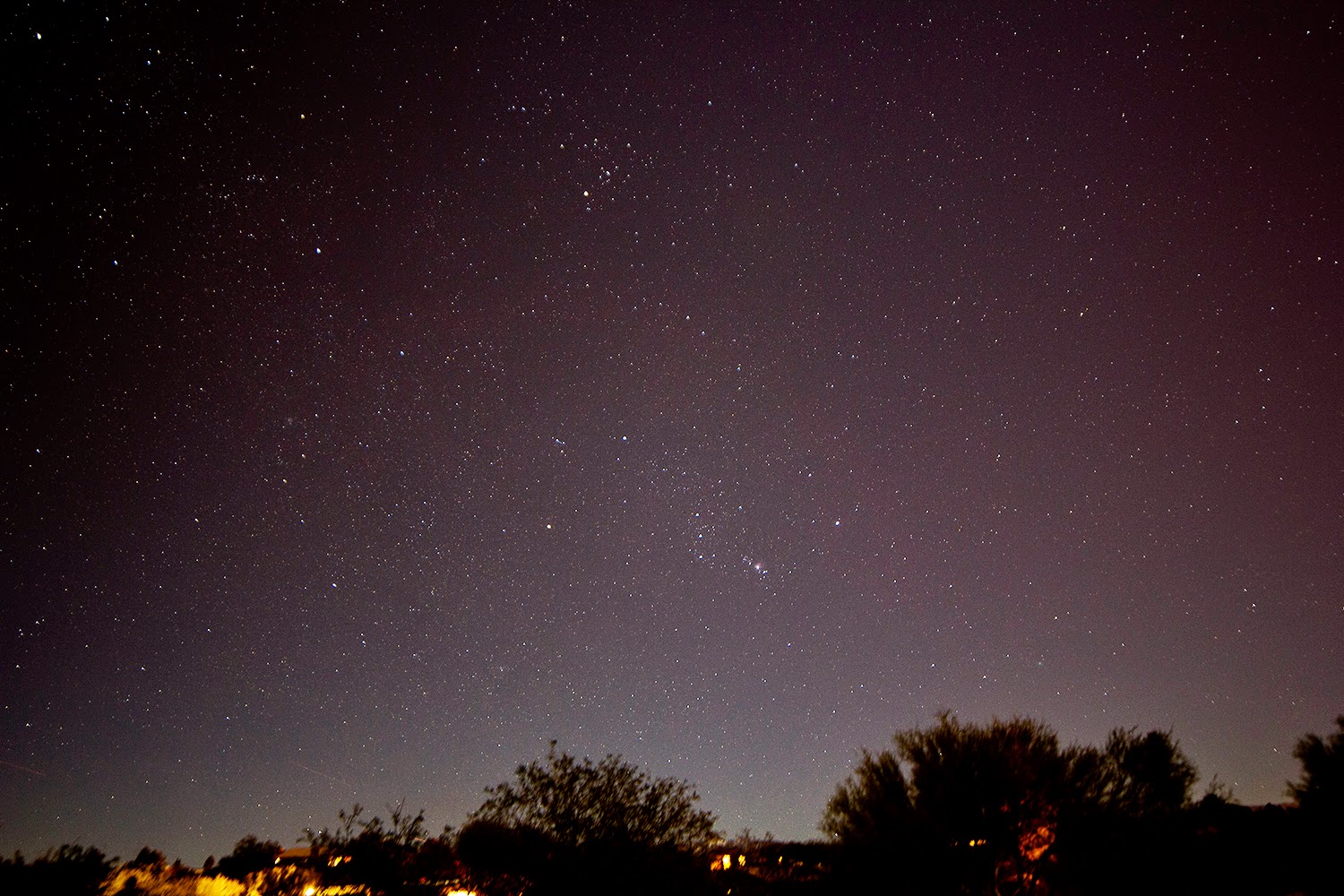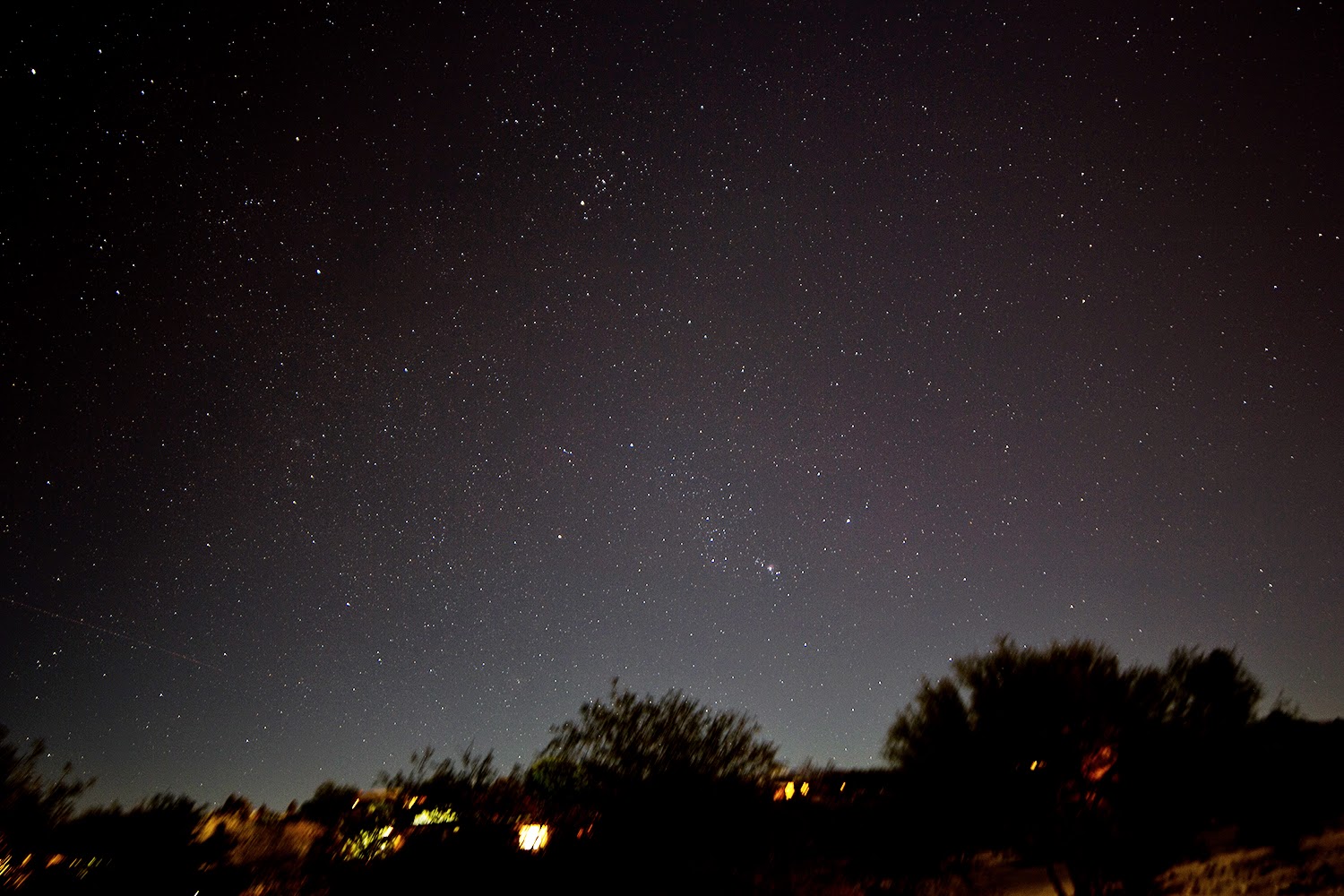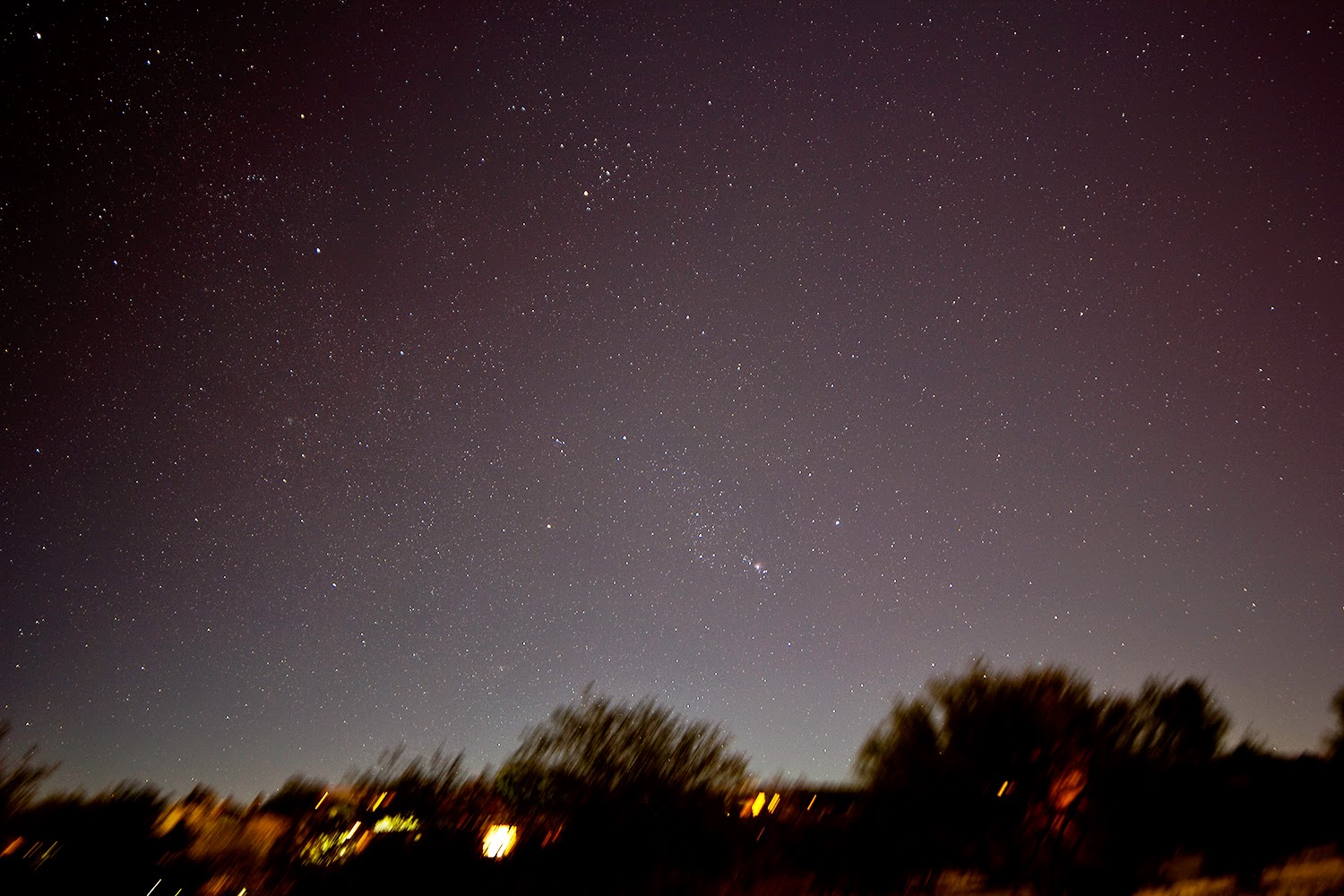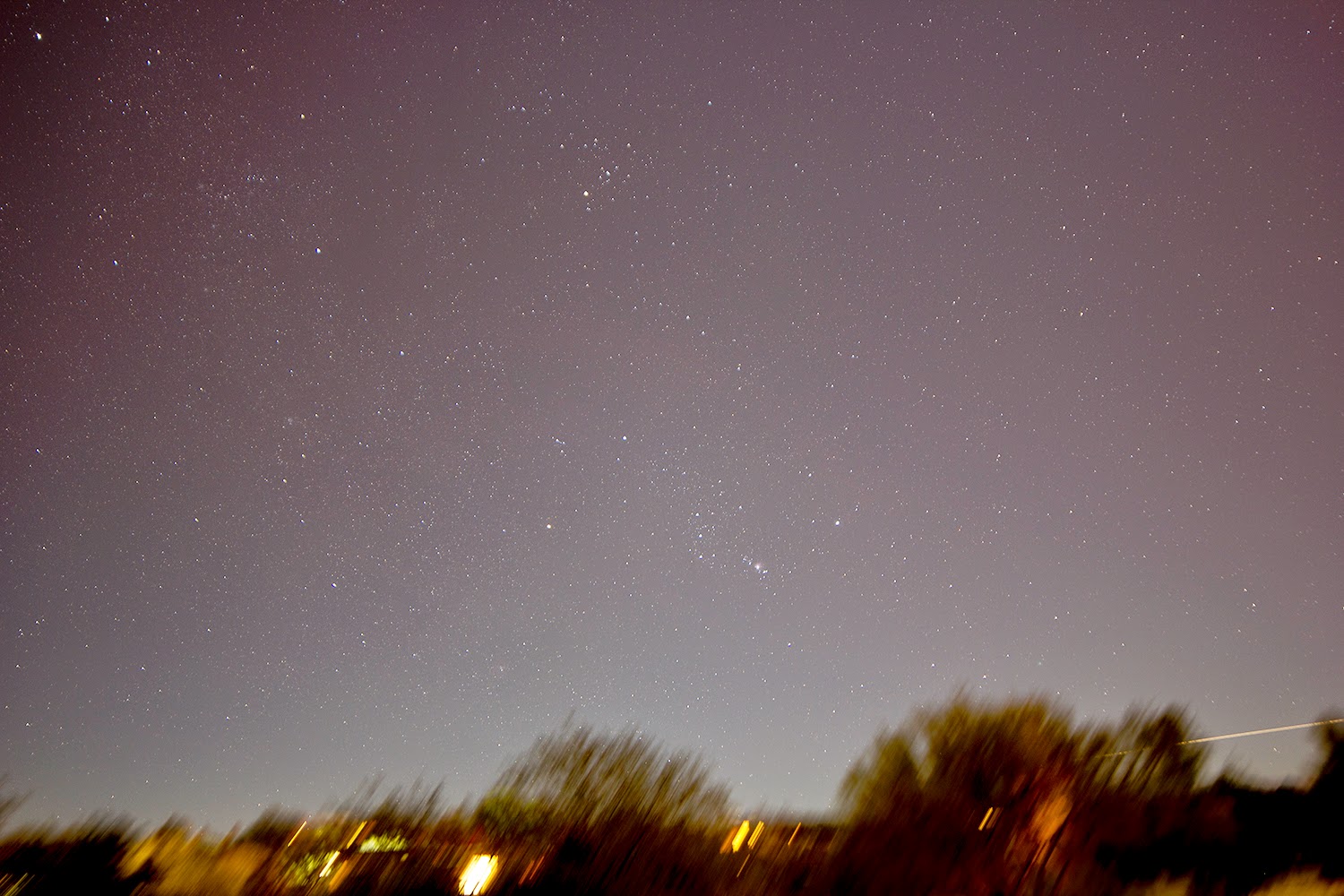 |
| 100-inch Hooker Telescope |
I am in Los Angeles this week visiting my sister and her family and also doing a bit of business related to my day job as Director the Mount Lemmon SkyCenter. My colleague Adam and I are visiting some of our partners in astronomical outreach on the west coast, and yesterday we visited Mount Wilson Observatory where we received an informative and inspiring tour from one of their senior docents and 60-inch telescope operator Nik Arkimovich. Walking around the site with Nik for 2.5 hours discussing the history, politics and economy of the early 1900's provided wonderful context for considering the astronomical facilities that were erected, as well as the groundbreaking discoveries that were made at Mount Wilson.
As an amateur astronomer the visit was as impressive as a visit to any significant landmark or museum of American history. Progressing through the afternoon was akin to progressing through a history of American Astronomy. We walked in the footsteps of Mount Wilson Observatory founder George Ellery Hale, as well as visionaries such as Edwin Hubble, Harlow Shapley, Fritz Zwicky, and some physics genius named Albert Einstein. Much of the site remains as it was during the early to mid 1900's when some of the most significant discoveries in astronomy were made at the the observatory. While improvements have been made related to safety, access and technological advances, the original Snow solar telescope, the 60 and 150 foot solar towers, the 60-inch and the 100-inch Hooker telescope as well as the large trees throughout the observatory grounds bear witness to the people and ideas that have walked the paths over the past century. Briefly, these are some of the highlights of our visit to Mount Wilson:
 |
| 150 and 60 foot Solar Towers |
 |
| Snow telescope enclosure |
Shortly after beginning our tour, the 60 and 150 foot solar towers (image at right) came into view. These telescopes were actually the second and third solar telescopes on site, with the first being the famous
Snow telescope. Mount Wilson's founder, George Ellery Hale, installed the Snow solar telescope in 1904 following its relocation from Yerkes Observatory in Wisconsin. It is the oldest telescope at Mount Wilson and it's optical path is actually horizontal (parallel to) and just above ground. At left is an image of the Snow telescope enclosure running along the ground, with the 60 foot solar tower in the background. The design of the Snow proved to be rather poor as the image of the Sun was dramatically impacted by thermal currents swirling all along the optical path. We were told that Hale quickly surmised that a vertical optical path would be better and the story is that he climbed various trees on site with a telescope to evaluate the localized seeing conditions. By 1908, Hale had arranged for construction of the 60 foot solar tower and it was using this instrument that he soon identified magnetic fields in sunspots, and thus for the first time proved that magnetic fields existed outside of Earth! Given his success and the utility of the solar tower design Hale then constructed a 150 foot solar tower in 1912, and began a daily recording of sunspots and study of their position, polarity, and strength that continues today. You can see the most recent
daily sunspot drawing from Mount Wilson by visiting this webpage. Below is an image of the 150 foot Solar Towers.
 |
| 150 foot Solar Tower |
As we progressed further into the observatory grounds we were soon within the dome for the 60-inch telescope. The 60 inch telescope was built by Hale in 1908 and funded primarily by the Carnegie Institution. The mirror blank itself had been cast in 1894 in France and was acquired by Hale as a gift from his father. While currently used exclusively for public outreach, this telescope was utilized for many of the pioneering studies in spectroscopy that led to the stellar spectral classification system. Impressively, this was the largest telescope in the world until 1917 when the 100-inch Hooker telescope was finished. Below are two images of the telescope in its dome.

Immediately below the 60-inch observatory floor are a darkroom and the original lockers that were provided for observers. These two pictures of the lockers are worth enlarging in order to read the names...


Next up was a quick pass by the CHARA array of Georgia State University that sits atop the observatory grounds. At right is one of the six enclosures that make up the Center for High Angular Resolution Astronomy array at Mount Wilson. Together, these 6 one-meter "telescopes are dispersed over the mountain to provide a two-dimensional layout that provides the resolving capability (but not the light collecting ability!) of a single telescope a fifth of a mile in diameter. Light from the individual telescopes is conveyed through vacuum tubes to a central Beam Synthesis Facility in which the six beams are combined together. When the paths of the individual beams are matched to an accuracy of less than one micron, after the light traverses distances of hundreds of meters, the Array then acts like a single coherent telescope for the purposes of achieving exceptionally high angular resolution." (
Quoted from this source). Among the many notable achievements of this array was the
first direct image of an interacting binary star (Beta Lyrae).
 |
| 100-inch Hooker |
 |
| Hooker Dome |
Continuing on we approached the building and dome housing the 100-inch Hooker Telescope (at left). The Hooker telescope was completed in 1917 and served as the largest telescope in the world until 1948 when the 200-inch telescope was installed at Palomar Mountain to the south. The telescope is beautiful to behold and along with the furnishings and the building itself hearken back to to a time of seminal discoveries in astronomy. In 1919, representing the first ever use of an interferometer in astronomy, an optical interferometer was used on this telescope to measure the sizes of distant stars. Most famously, on the night of October 5-6, 1923 (almost exactly 91 years ago!)
Edwin Hubble imaged a Cepheid variable star in the great Andromeda Galaxy and for the first time proved with certainty that the Andromeda 'nebula' was outside of our own galaxy and in fact a galaxy completely separate from our own. This discovery was a key part of Hubble's pioneering work on the expansion of the Universe and the establishment of a cosmic distance scale.
Below are two images of the original, and still functional control panel for the telescope. At left you can see the two periscope like devices that using a series of prisms allowed the observer to see the distant setting circles mounted on the telescope to note it's position. At right you can see a close up of the brass control buttons for the telescope
If you have read this far and are interested in seeing more pictures (such as of the backside of the 100-inch mirror, or the mounting and gear system of the 60-inch) email me! For the rest of you, I did make a one-minute video of the 100-inch Hooker telescope as I stood on the rotating platform (at the base of the dome) above the observatory floor. Click on the settings icon (looks like a gear) to set it to HD and watch it full screen:
Again, a big thank you to Mount Wilson for hosting us, and especially to Nik for taking the time to show us around.
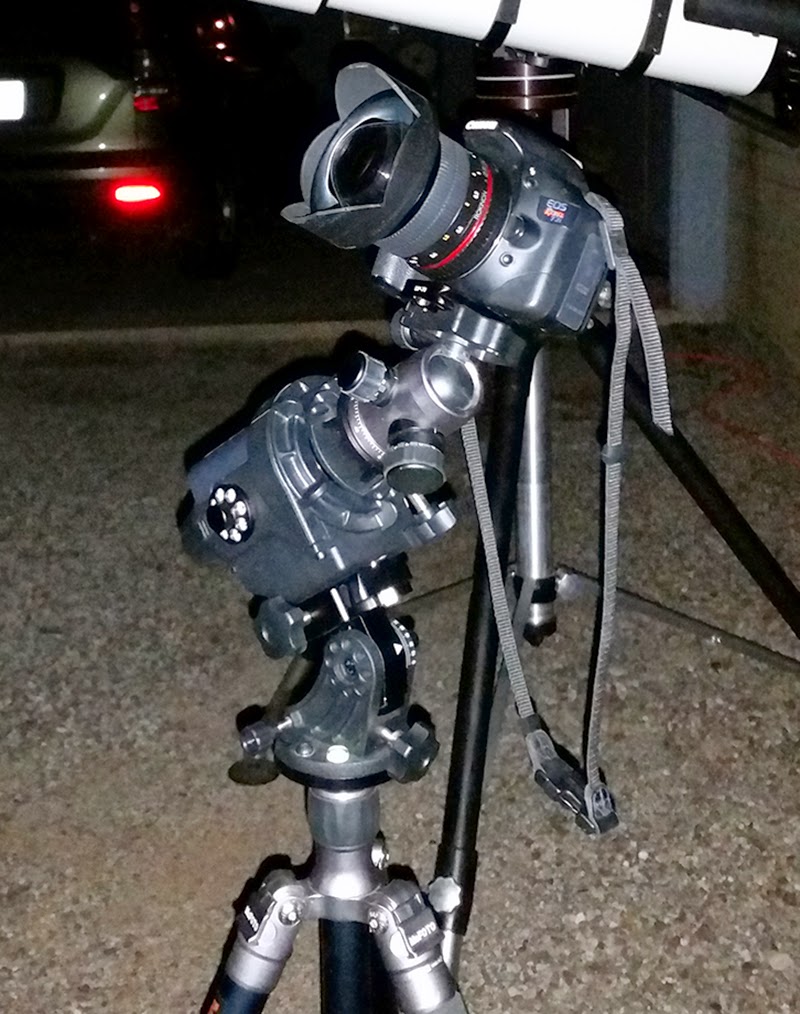 After my first successful night using the Star Adventurer mount (detailed here), I wanted to do a more thorough job of learning the ins and outs of the mount and seeing if I could truly take some long exposure images. The first thing I did was to check during the day to see if the polar alignment scope was calibrated to the mount itself. This is done simply by placing a distant object on the cross-hairs of the polar scope and then rotating the mount in right ascension. If the object drifts off the cross-hairs then the polar scope is not centered precisely in the mount housing. To my delight, the polar scope appeared nearly perfectly calibrated! There may have been a very slight drift, yet it was so small I felt that I would not be able to make a meaningful improvement using the set-screw adjustments, and in fact I was not totally sure that I was not causing the apparent drift simply by having to move the mount manually. Yet, sometimes I can obsess (the only enemy of good is better!), so to test this I turned the mount on and set it for 12x sidereal rate and let it track for about 10 minutes. This would represent 180 degrees of rotation if I let it go for an hour, so in 10 minutes I had about 18 degrees of rotation and there was no appreciable drift. This is certainly longer than any exposure I see myself doing in the near term as 18 degrees of apparent motion equates to 72 minutes of real time!
After my first successful night using the Star Adventurer mount (detailed here), I wanted to do a more thorough job of learning the ins and outs of the mount and seeing if I could truly take some long exposure images. The first thing I did was to check during the day to see if the polar alignment scope was calibrated to the mount itself. This is done simply by placing a distant object on the cross-hairs of the polar scope and then rotating the mount in right ascension. If the object drifts off the cross-hairs then the polar scope is not centered precisely in the mount housing. To my delight, the polar scope appeared nearly perfectly calibrated! There may have been a very slight drift, yet it was so small I felt that I would not be able to make a meaningful improvement using the set-screw adjustments, and in fact I was not totally sure that I was not causing the apparent drift simply by having to move the mount manually. Yet, sometimes I can obsess (the only enemy of good is better!), so to test this I turned the mount on and set it for 12x sidereal rate and let it track for about 10 minutes. This would represent 180 degrees of rotation if I let it go for an hour, so in 10 minutes I had about 18 degrees of rotation and there was no appreciable drift. This is certainly longer than any exposure I see myself doing in the near term as 18 degrees of apparent motion equates to 72 minutes of real time!